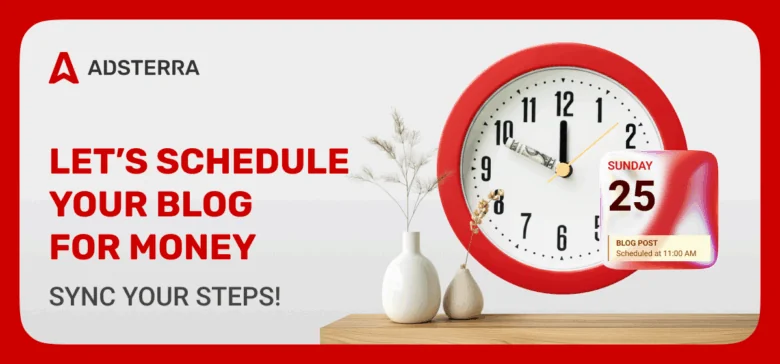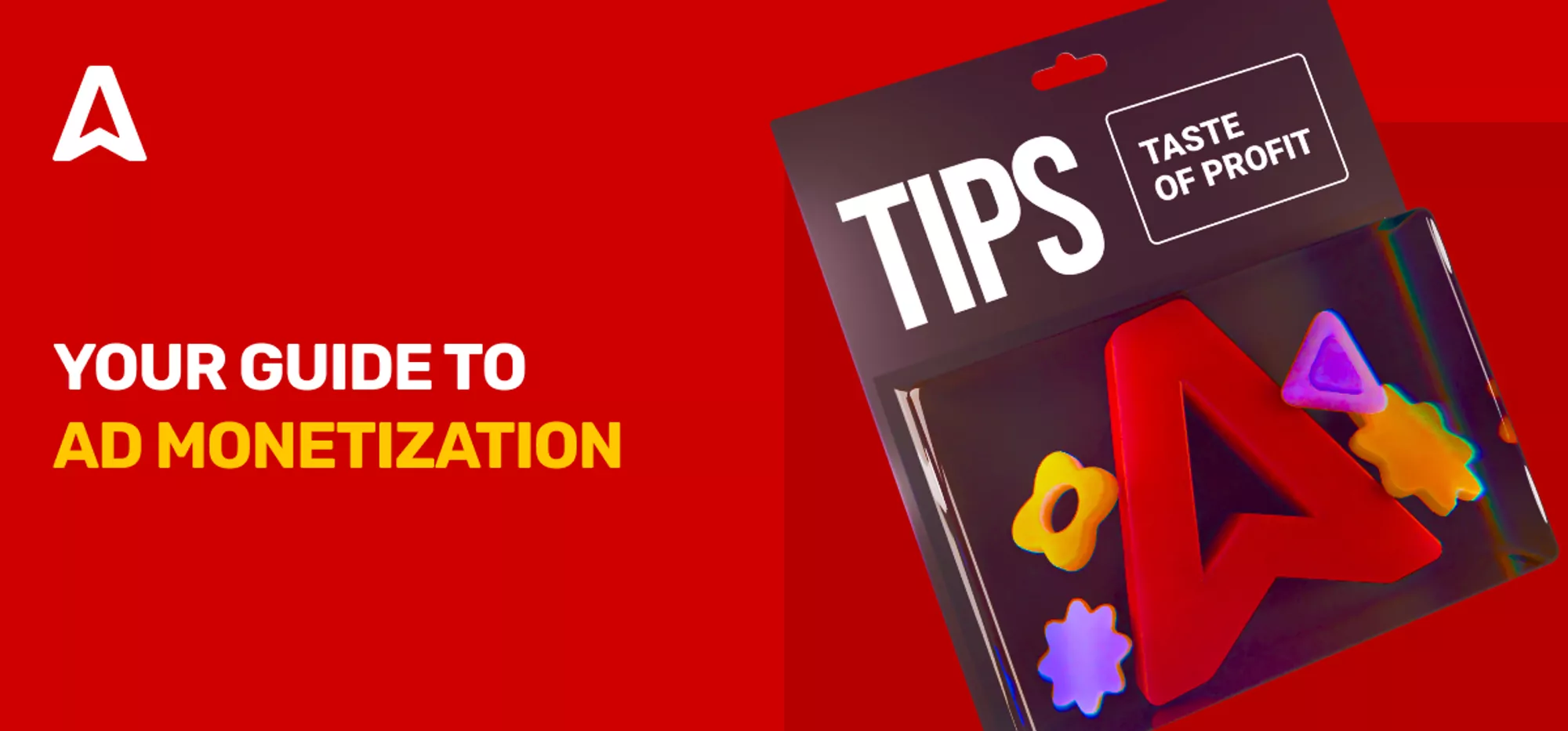How do I earn money blogging? It’s a question that many people ask, and we’re here to provide the answers. Blogging can be lucrative, but it’s not an easy way to make money online, whether it’s your full-time career or a passive income business.
So, how can you make money as a blogger? You need to invest considerable time and consistent effort. And this guide will explain the best ways of how to make money out of blogging and the exact, clear steps you need to take.
Let’s jump right in.
How can you earn money from blogging?
Blogging can be extremely profitable, but you need time and blogging effort to build a profit-generating audience. Can anyone make money blogging? Exactly right! You can start making money regardless of your age and professional experience, learning the ins and outs of the business with time. You don’t need any credentials or experience to be a blogger and to learn how to blog and make money.
Is blogging still a viable income source?
Blogging is still viable and is one of the best ways to make money online. Building a blog has become easier. You can do it with ready-made site builders on platforms like WordPress, Wix, Squarespace, Blogger, monetizing with Blogspot and other robust platforms, that have the whole infrastructure for you on the go.
The blogging platforms provide templates that you can simply edit to create a professional blog. You don’t need technical skills or a programmer for help. You can host a blog with a custom domain for as low as $3 monthly.
You don’t need a specific amount of views to make money blogging, either. Adsterra doesn’t have any minimum traffic entry level before you start monetizing your blog website or social media accounts. So, can bloggers make money blogging immediately? Yes, and the higher the traffic, the more money they can make.
Adsterra makes it easy to earn money from your blog. With over 15,000 reputable advertisers on our network, you can be sure of getting non-stop advertisements on your blog and earning a steady income.
Building the foundation: setting up your blog for success
To build a successful foundation for your blog, you can go forward and fulfil the following steps:
- Evaluate high-demand niches.
- Choose the niche that you’re really fond of and well-versed in.
- Choose a memorable domain name and reliable hosting for your blog.
- Pay attention to a clean website design, mobile responsiveness and an intuitive user interface.
- Write high-quality, SEO- and AI-optimized content that helps users achieve their intents.
- Use tools like Google Analytics 4, Semrush, Google Search Console, and the like to help improve and monitor performance.
9 Ways to make money from blogging
Comparison Table on How to Make Money out of Blogging.
| Monetization Method | Description | Timeline | Ease of Entry | Income Potential |
|---|---|---|---|---|
| Ad Networks | Connect your blog to networks like Adsterra or AdSense to automatically display ads. | Fast-acting | Easy with a niche, flexible ad network | Medium to High |
| Affiliate Marketing | Use unique links and earn commissions for sales. | Fast-acting | Medium | Medium to High |
| Display Ads | Use ad formats like Banners, Popunders, In-Page Push, Social Bar, etc. to monetize traffic. | Fast-acting | Easy | Medium to High |
| Sell Products or Services | Sell eBooks, templates, merch, etc. directly through your blog. | Growth-focused | Medium | Medium to High |
| Sell Online Courses | Create educational content like video courses. | Premium offerings | Medium | High |
| Consulting | Offer 1-on-1 advice or professional services (e.g., design, legal, fitness). | Premium offerings | Medium | High |
| Sponsored Reviews | Get paid by brands to review their products or services on your blog. | Growth-focused | Medium | Medium to High |
| Podcast Sponsorships | Launch a podcast and earn through ads or sponsorships. | Growth-focused | Medium | Medium to High |
| Paid Subscriptions | Offer premium content behind a paywall to loyal readers. | Premium offerings | Hard | Stable, Medium-High |
1. Ad networks
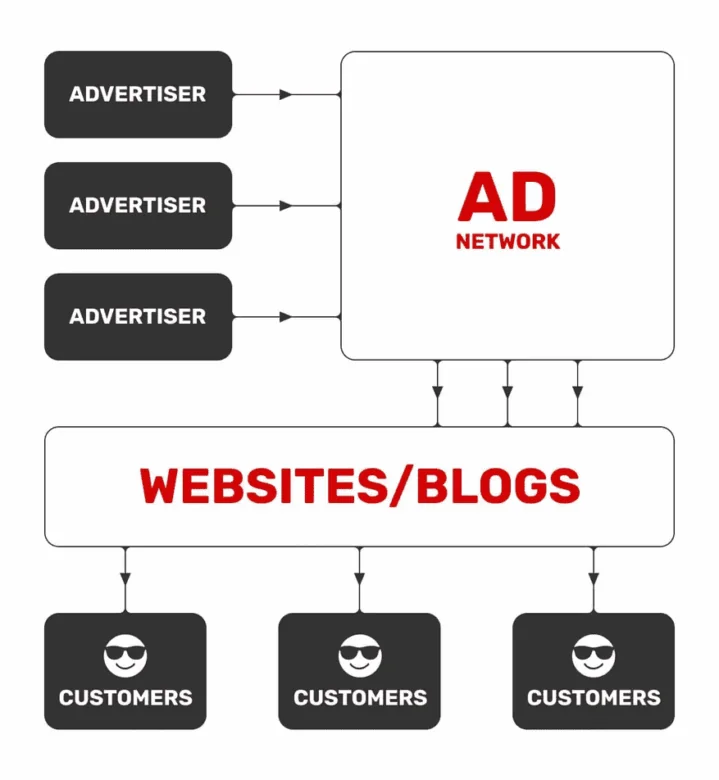
An ad network is a digital platform that serves as a middleman between advertisers and blog publishers. You do not need to spend time and effort chasing advertisers as they are already registered on the network. You only need to connect your site to get ads placed.
Different networks have different requirements to join. For instance, one might demand at least 10,000 monthly page views while another requires 100,000+. You can go for established ad networks with stricter submission rules, like Google AdSense, or choose more flexible, high-paying networks. For example, Adsterra doesn’t set any entry barriers to the number of ad impressions your blog delivers, unlike platforms like Google AdSense.
Let’s break it down into simpler steps:
- Choose an ad network with quick moderation.
- Register and verify your website.
- Choose ad formats.
- Copy and paste ad codes on to your website.
- Enjoy monetization. The more abundant and genuine traffic you send, the more chances you have to get higher payouts.
There are many popular ad networks out there to choose from. Adsterra is one good example, with over 15,000 registered advertisers and 36,000 publishers. You can choose from different types of ads, including Banners, Popunders, Native ads, and non-intrusive Social Bar ads with up to 30X higher CTRs compared to web push ads.
2. Affiliate marketing
Affiliate marketing is a system where you advertise a product for an online retailer (advertiser, brand, or company) and earn a commission on each sale coming from your referral. The affiliate (publisher) drives traffic to an online merchant’s website. If the traffic converts into a sale, the publisher will earn a fixed percentage of the sale within affiliate marketing partnership.
Let’s break it down into simpler steps:
- A retailer has a product they want to sell.
- You reach out to them to start an affiliate marketing partnership.
- The retailer gives you a unique link with tracking parameters.
- You insert the link on your blog or website.
- Your loyal audience clicks on the link.
- You earn a commission from the affiliate marketing sale.
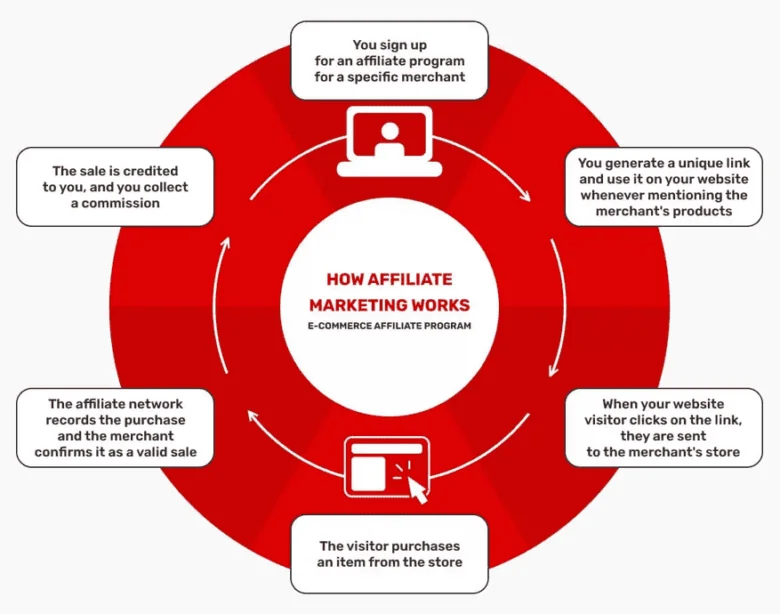
Advertisers are constantly looking out for affiliates they can partner with to spread the word about their products. You can find them on dedicated affiliate networks with links, like special Amazon affiliate links, or reach out to brands directly.
Within affiliate relationships, writing a product review and including your affiliate links is a smart way to earn income. Ensure you promote products within affiliate programs that are relevant to your target audience.
3. Display ads to earn money blogging
How to make money blogging the proven way? Selling ad space as display ad placements is a common and proven method to make money blogging. You can earn significant amounts by allowing brands to place graphic advertisements on your website. These ads incorporate eye-catching visuals and have a call-to-action button leading to the advertiser’s website.
Display advertising comes in many forms, including:
Smartlink (Direct Link)

The simplest monetization strategy for your blog and blogging business is to place Smartlink (Direct Link) anywhere suitable on your blog or social media. It’s a simple url that shows multiple ad offers. Publishers place these urls on their blogs and get paid for views, clicks, and conversions.
You get a line of code from Adsterra and put it anywhere you monetize with. When a user clicks Direct Link, Adsterra algorithms select the best ad to attract the user. You get paid when users both view ads and when they convert.
Popunders

Popunder is a creative ad format that appears behind the user’s browser tab. The user only notices the ad after closing their browser tab, making it less disruptive than other ad formats. Popunders are effective because they don’t distract the viewer while they’re still reading your posts: they only appear after the user is done with the post and wants to close it.
Here is a case study of Adsterra’s blogger, Akerele Oluwatobiloba, who also started with Popunders. as they pay out very well. With time, he’s figured out what suits in particular for his niche to earn $50 a day.
Social Bar
Social Bar ads are one of the most advanced ads nowadays, specifically designed by Adsterra to tackle the user’s ad fatigue. They appear like push notifications on a web page. You can place them anywhere on your website and customize their appearance to match your website’s theme. Social Bar ads are effective as they look neat and are optimized for both desktop and mobile displays.
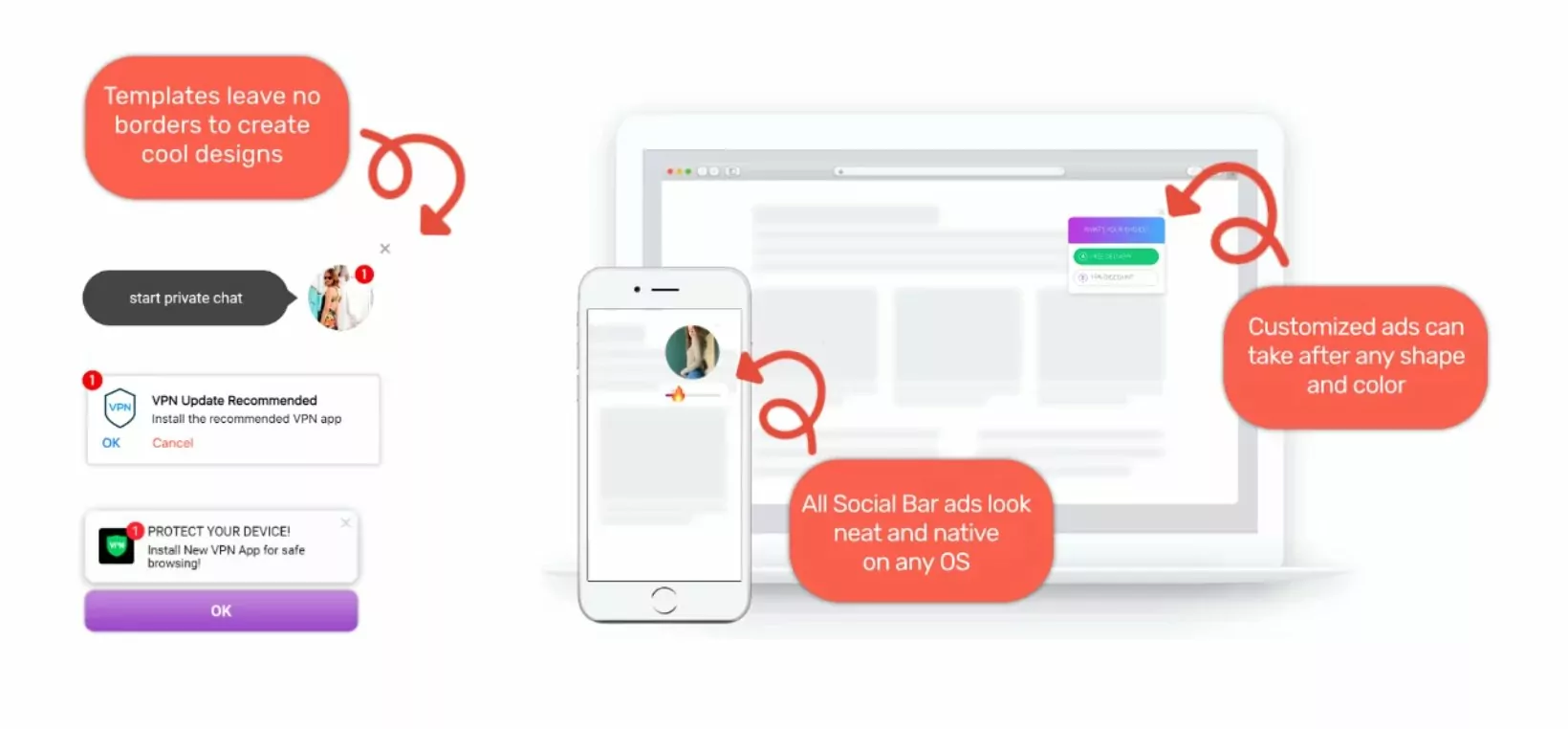
In-Page Push ads
In-Page Push ads also resemble push notifications. The difference is that they’re displayed at a specific position, which you can place anywhere on the page. These ads are good at capturing the viewer’s attention, leading to higher conversions and revenue.
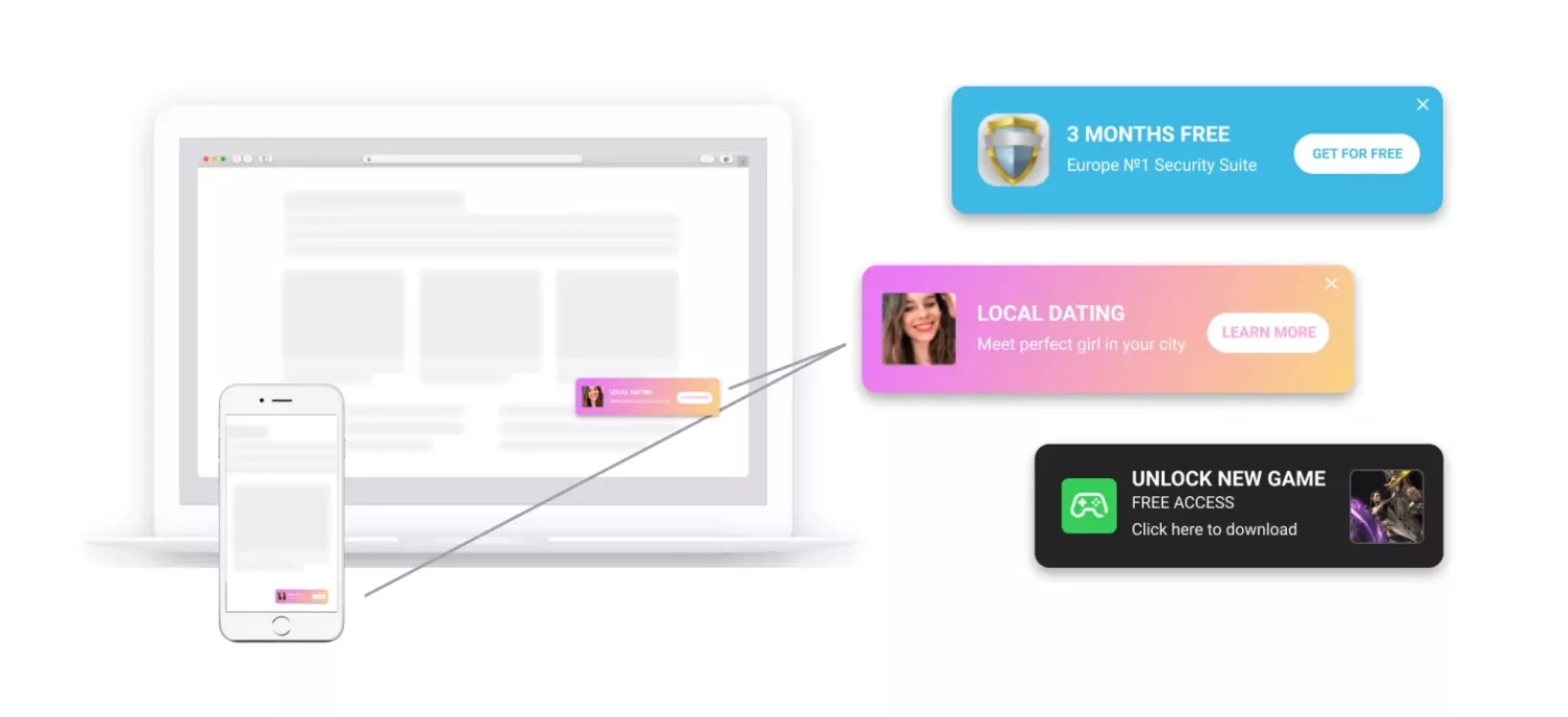
Native ads
Native ads are unique for resembling your blog posts. They blend in very well with your website, so that the viewer might not even notice it is an ad. Native ads look like your website’s original content, making them effective at generating income.
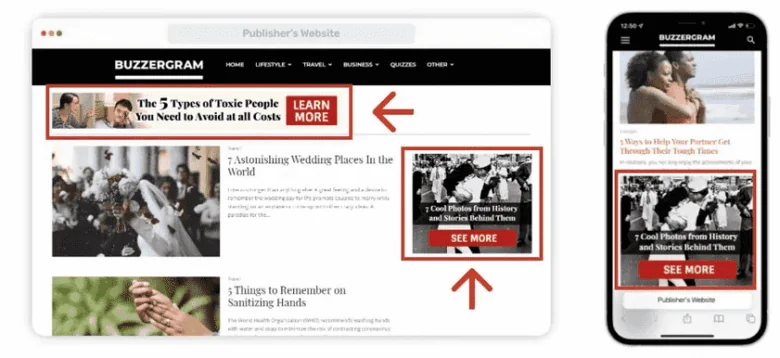
Interstitial Ads
These are full-screen ads covering the whole webpage. Viewers always notice Interstitial, making them very effective at earning revenue. However, they should only be placed after specific user actions, e.g., clicking a link or scrolling between pages.
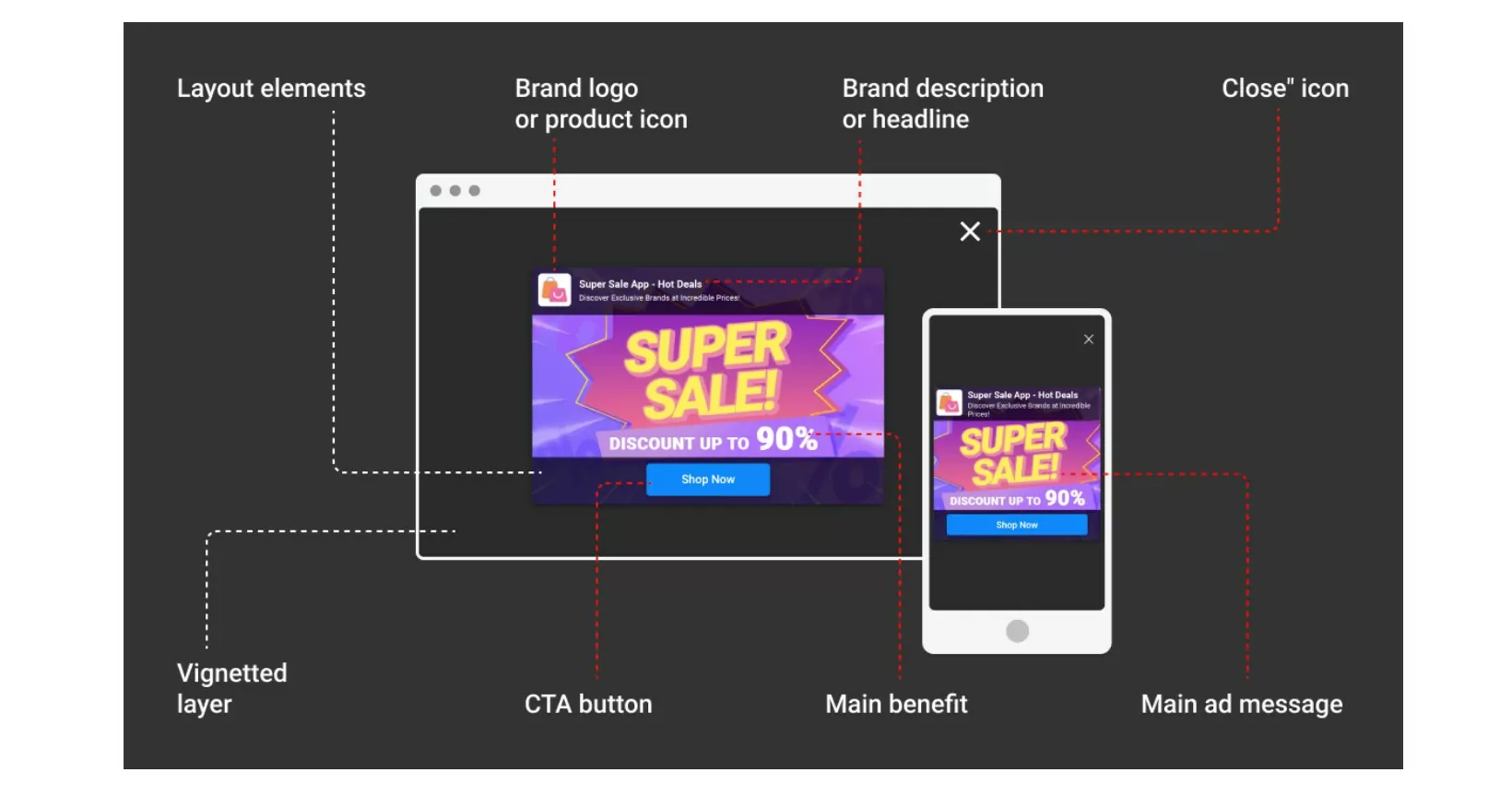
4. Selling physical and digital products or services
You can make money blogging by selling physical products, digital products, and digital downloads to your audience and promoting them through social media channels. The key is selling digital products related to your niche. For example, a fashion blogger can sell products like clothing and accessories or fashion-related courses to their blog audience.
Let’s break it down into simpler steps:
- Choose the kind of product or service you want to sell.
- Think of the retail flow.
- Purchase and install a payment plugin (It can be an in-built feature with your blogging platform).
A successful case study on this monetization method comes from Into The Gloss, a popular makeup blog. After gaining a large following, it began selling branded makeup products to its readers. This online business morphed into Glossier, a popular beauty products retailer with nearly $200 million in annual revenue.
5. Selling online courses
If you run a digital marketing blog, you can create and sell courses to share your expertise and teach people how to be effective digital marketers. You can also write an e-book on the same topic and market it to your readers. Popular blogs regularly host virtual workshops per their readers’ interests, bringing them together to learn from industry experts.
Let’s break it down into simpler steps:
- Define the topic you’re skilled in and people are willing to pay to learn.
- Break down your topic into modules and record videos or lessons.
- Use platforms like Teachable or Thinkific to host your course.
- Promote through email and social media. Offer early-bird discounts or bonuses.
6. Consulting/сoaching
Another way to earn money blogging is by offering freelance services, like coaching and consulting services, to your readers. Let’s say you run a popular legal services or interior design blog. As an expert in the sector, you can charge money for consulting sessions for people who want to get legal advice or design their homes.
Let’s break it down into simpler steps:
- Leverage your network, social media, or content marketing to attract and convert leads.
- Focus on a specific area where you have expertise.
- Package your knowledge into clear services or programs with results.
- Build a simple website or landing page with testimonials and booking options.
7. Sponsored reviews
Almost everyone has read a sponsored post review. Bloggers monetize by charging money to review specific products. For instance, if you run a beauty and makeup blog, you are free to charge brands a fee to review their own products.
You demonstrate new products to your audience and keep them engaged. How much you will charge for a sponsored review depends on your level of traffic and the engagement of your audience readership. However, do not be afraid to demand as much as you think you are worth.
Let’s break it down into simpler steps:
- Grow a blog focusing on a specific topic or industry.
- Create a media kit with your audience stats, engagement, past collaborations, and rates.
- Reach out to relevant companies to offer sponsored review opportunities.
Adsterra supports multiple ad formats that give rich new opportunities to monetize your blog or website, including Banners, Native ads, Popunders, In-Page Push, and more, across various niches, such as iGaming, Utilities, VPN, Social & Dating, etc.
8. Produce a podcast
Another monetization strategy is launching a podcast. It can start as just a hobby, but can help you diversify your revenue streams. Once you acquire a decent following, you can make money blogging by placing ads in podcast descriptions on YouTube videos. Alternatively, you can integrate video ads to your podcast to generate another income stream on top.
Let’s break it down into simpler steps:
- Plan your concept, format (interviews, solo, etc.), and target audience.
- Record and edit episodes using a good mic and software like Audacity or Descript.
- Publish and promote, hosting on platforms like Buzzsprout or Anchor, and share on social media and directories (Spotify, Apple Podcasts).
9. Offer paid subscriptions
Paid subscriptions are a creative way of how you can earn money from blogging. Here, you monetize your audience directly by charging readers to access specific content. You can continue with regular content and blog posts that anyone can read, and have a separate premium section only available to paid subscribers.
The main advantage of this model is that subscription revenue tends to be stable. It also makes it easy to forecast how much revenue you are expecting as the number of paid subscribers grows. However, this model is only suitable if you have started blogging, built a large following with free content, and garnered some loyal readers willing to pay for more.
Let’s break it down into simpler steps:
- Start with loyal followers, offer limited-time deals, and consistently deliver value to retain subscribers.
- Identify exclusive content or perks your audience will pay for (e.g., premium articles, community access, behind-the-scenes content).
- Pick from platforms like Substack, Patreon, or Memberful to manage subscriptions and payments.
Key steps for success
Choose a profitable niche
An essential aspect of how you can earn money from blogging is selecting a good niche or blog topic to focus on. Some niches are more profitable than others. That said, it doesn’t imply that you should go with the most profitable niche like some other bloggers if you have no passion for it. Such niches have the highest competition, making it harder to break into and build a large following.
An alternative move is to set up multiple blogs in narrow niches and create content that you are competent enough to generate. That is what we offered in our earlier article “Are You a Blogopreneur?” about blogging as a business model.
Make money blogging with different blog types
Finance blogs: Finance is one of the highest-paying blogging niches. You can write about personal finance topics like “Best credit cards to use,” “Best stock trading apps,” “Best wealth management platforms,” etc., and insert affiliate links to earn more money.
News sites: You can create a website delivering the latest news about politics, business, technology, or any other field. The key is specializing in something particular and posting consistently to send more traffic to your blog. Then, you can monetize it with ads.
Here is a case study of a professional blogger who went for news reporting as his niche. “I chose a news website because I’m very good at turning celebrities’ social media pictures into fully readable and viral news. And that’s a winning move in the 21st century.” He makes up to $80 daily from advertising powered by Adsterra.
Movies: Many people watch movies online and read reviews. You can specialize in a movie theme, e.g., horror, fiction, or history. Movie enthusiasts have a higher tolerance for ads, so monetizing your website is easy.
Sports: Sports fans need websites with up-to-date news, highlights, event schedules, and other relevant information. You can create a successful blog that delivers this information, preferably specializing in a single sport. A highly engaged sports audience can be easily monetized with affiliate links/affiliate programs.
Define and engage with your audience
Your audience is the group of readers your content appeals to. It’s the cohort that’ll gain a lot from reading your blog posts and will likely come back for more. Define your target audience based on demographics such as gender, age, income level, location, and interest: you should have a clear picture of the characteristics of your ideal reader.
Research what keywords and phrases your audience frequently searches for and write detailed articles responding to those queries. Google Analytics and analytics tools from social platforms can also help you define the common traits of your existing audience in order to engage them the most. Put yourself in their shoes and ask yourself what content you want to view on a blog online. Most engaged readers become your loyal following and develop trust, which is one of the main steps for success.
Harnessing the power of SEO
Search engine optimization (SEO), hand in hand with AI tools, centers on including relevant keywords that your audience often searches. Use optimized titles and provide meta descriptions for all your blog posts.
Search engines are the primary source of organic traffic for a blog, meaning you can’t afford to miss out on this area. Your blog’s content should be optimized to rank high and attract valuable viewers.
You can start earning money from your blog and your SEO traffic in a few steps. Adsterra provides a 100% fill rate on all ad slots on your website. You can always get hold of Adsterra’s Anti-AdBlock feature that helps increase revenue streams by up to 35%.
Create high-quality content
Quality content is necessary to attract people to your own blog when they do a quick Google search. No one wants to read content that does not add value to them or, at worst, is false and misleading. Does your content answer their common questions? Use Google Trends to look for the common questions among your niche audience or check the FAQ sections of similar websites. SEO tools like SEO Surfer can also help you research, audit, and write SEO-optimized articles.
The artificial intelligence tool ChatGPT or Perplexity can help you write content that drives engagement. You can use a few free AI tools to help you generate content faster. Always remember to humanize your texts.
On top: Use catchy headlines to draw attention because this is the most challenging part of getting your audience to read your blog content, e.g., “Better Sales, Made Simple,” “Transform Your Online Store With this Tool,” “A New Approach to Up Your Fashion Game,” “Meet the New ___,” etc.
Catchy headlines appeal to the reader’s emotions and pique their curiosity. Make them feel like they have something to lose by not reading your article, as the above examples illustrate. It’s like showing someone a minor part of something valuable and leaving them hungry for more.
Consider Saif Khan, an Indian blogger who used ChatGPT to create compelling content for his blog, generating high-quality traffic and $3,000 monthly revenue. And also try our article about the best ways to make money with ChatGPT.
Build your backlink profile
Backlinks are incoming hyperlinks from another web page to yours. They improve your rankings on search engines like Google and give you a more solid reputation among readers. To build your backlink profile, you can reach out to blogs with posts related to yours. Here is an example of a format to follow:
The example of a letter for backlink queries
“We write ten guest posts per month and would be happy to link to your website in our content. We’d also love to contribute to your blog and can pitch some topic ideas that your audience will enjoy.”
Of course, not everyone would respond to your reachout, but the few that respond can be worth it.
Build an email list
You might have observed that most popular blogs use email marketing. You can employ email newsletters to remain in touch with readers, e.g., sending every new post as a newsletter the subscriber can read in their inbox.
You can also announce discounts and seasonal promos, digests, new arrivals, and partnerships with your blog newsletter. You should endeavor to grow your email list as much as you can. The higher the number of email subscribers, the better the chances of making money with a blog. Paid subscriptions also generate direct revenue. Strong open rates and engagement enhance brand loyalty, leading to consistent, trackable revenue growth.
Optimization and growth: turning your blog into a full-time income
By persistent optimization efforts, you can turn blogging into a full-time income stream and grow it steadily to a full-time business. You don’t need to be a celebrity or social media influencer to start a blog for money. You can start small and build an audience with relevant content, social media post promotion, guest posting for boosting backlink profile, and search engine optimization (SEO).
The time it takes to make money blogging depends on several factors, including niche, content quality, and your marketing efforts. However, it generally takes at least 6 to 12 months to start earning a significant income from a blog. Most blogs make $3 to $25 per 1,000 views, but you don’t have to stick to the average.
Successful bloggers can make much more with the right approach and more control over monetization methods. You can analyze performance data and scale what works. Treat your blog like a business to fuel long-term growth.
Final thoughts
If you are still deciding on: how can I make money from my blog — advertising may be the answer, as it’s the most common way that most bloggers use. Once you build a solid foundation for your blog, choose the monetization strategy. Placing ads is a reliable method that takes no extra effort on your part. Additional ways can be charging brands for sponsored posts or brand collaborations, getting paid for product reviews, writing and selling e-books, creating a paid membership, etc. Patience, persistence, and continual optimization are key to a money-making blog.
How can you earn money from blogging? FAQ
Do beginner bloggers make money?
Yes, beginner bloggers make money, but it usually takes time and a well-planned business strategy. Income sources include putting ads, affiliate links, sponsored posts, and freelancing. Success depends on niche selection, traffic, and content quality.
What is the fastest way to make money blogging for beginners?
The fastest way to make money blogging for beginners is usually to put ads on your website. You can start making money blogging with any traffic, small or big, with flexible ad networks like Adsterra that have no entry threshold. The question of how you can earn money from blogging as a beginner is an easy answer: register, copy your code and place it on your blog pages.
How long does it take to make $1000 per month blogging?
You can roughly estimate from up to a year to be able to make $1000 per month blogging. And it’s only guesstimation as there are no cast-iron timeframes. The more consistent you are in building and developing your blog, the higher the results you get.
How does a blog pay you?
A blog doesn’t pay you directly. So many bloggers get paid selling ad space on their blog, adding affiliate links, creating and selling digital products, promoting personal brand products, writing sponsored content, gating exclusive content with subscriptions, etc. Advertising networks are usually the easiest way for bloggers to get paid by copying and pasting the ad code on their pages. It appears much easier when you dive in deeper on how make money from blogging.
